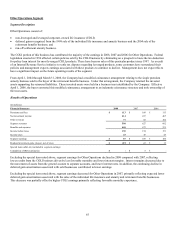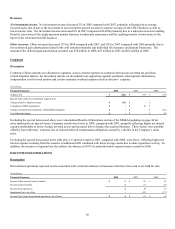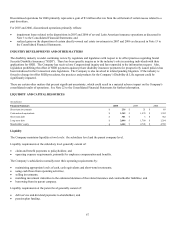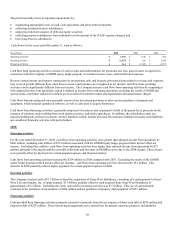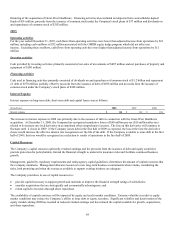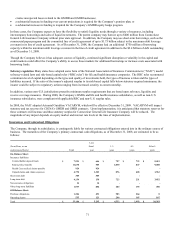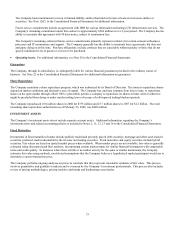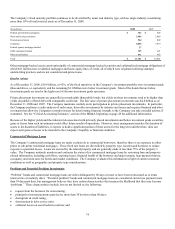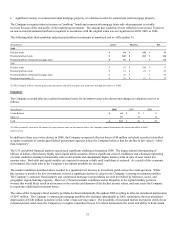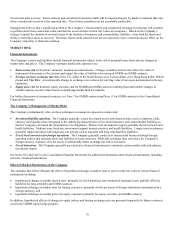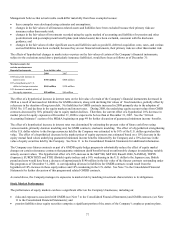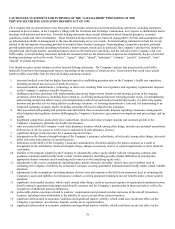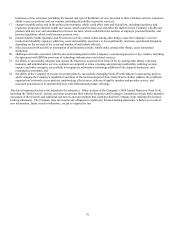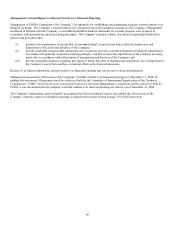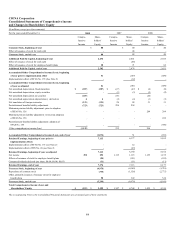Cigna 2008 Annual Report Download - page 95
Download and view the complete annual report
Please find page 95 of the 2008 Cigna annual report below. You can navigate through the pages in the report by either clicking on the pages listed below, or by using the keyword search tool below to find specific information within the annual report.
75
• significant vacancy in commercial rental mortgage property, or a decline in sales for commercial retail mortgage property.
The Company recognizes interest income on “problem” bonds and commercial mortgage loans only when payment is actually
received because of the risk profile of the underlying investment. The amount that would have been reflected in net income if interest
on non-accrual investments had been recognized in accordance with the original terms was not significant in 2008, 2007 or 2006.
The following table shows problem and potential problem investments at amortized cost as of December 31:
(In millions) Gross Reserve Net
2008
Problem bonds $ 94 $(59) $ 35
Potential problem bonds $ 140 $(14) $ 126
Potential problem commercial mortgage loans $ 92 $ - $ 92
2007
Problem bonds $ 47 $(30) $ 17
Potential problem bonds $ 34 $(9) $ 25
Potential problem commercial mortgage loans $ 70 $ - $ 70
Foreclosed real estate (1) $ 16 $(3) $ 13
(1) The Company sold its remaining foreclosed property and did not acquire any properties through foreclosure in 2008.
Summary
The Company recorded after-tax realized investment losses for investment asset write-downs and changes in valuation reserves as
follows:
(In millions) 2008 2007 2006
Credit-Related $ 44 $ 12 $ 11
Other (1) 97 14 18
Total $ 141 $ 26 $ 29
(1) Other primarily represents the impact of rising interest rates on investments where the Company cannot demonstrate the intent and ability to hold
until recovery.
In addition to these asset write-downs, in 2008, the Company recognized after-tax losses of $9 million on hybrid securities (classified
as equity securities) of certain quasi-federal government agencies where the Company believes that the decline in fair value is “other-
than-temporary”.
The U.S. and global financial markets experienced significant challenges throughout 2008. The unprecedented downgrading of
billions of dollars of previously highly rated, liquid public securities led to a significant crisis of confidence and a dramatic tightening
of credit conditions leading to historically wide credit spreads and substantially higher market yields in spite of near record low
treasury rates. Both debt and equity markets are expected to remain volatile until confidence is restored. As a result of this economic
environment, the credit risks in the Company’s investment portfolio are elevated.
The market conditions described above resulted in a significant net increase in investment yields across the credit spectrum. While
this increase is positive for new investments, it drove a significant decline in value for the Company’s existing investment portfolio.
The Company’s corporate fixed maturity and commercial mortgage loan portfolios are well diversified by borrower, sector, and
geographic region, limiting exposure. However, if broad economic conditions and/or illiquidity in the capital markets persist or
worsen, this would likely result in an increase in the severity and duration of the decline in asset values, and may cause the Company
to experience additional investment losses.
The value of the Company's fixed maturity portfolio declined substantially throughout 2008 resulting in after-tax unrealized depreciation
of $147 million. The Company’s commercial mortgage portfolio also declined substantially in 2008, resulting in after-tax unrealized
depreciation of $140 million (a decline in fair value versus carrying value). The possibility of increased market investment yields for an
extended period could cause the Company to recognize impairment losses if it cannot demonstrate the intent and ability to hold certain


